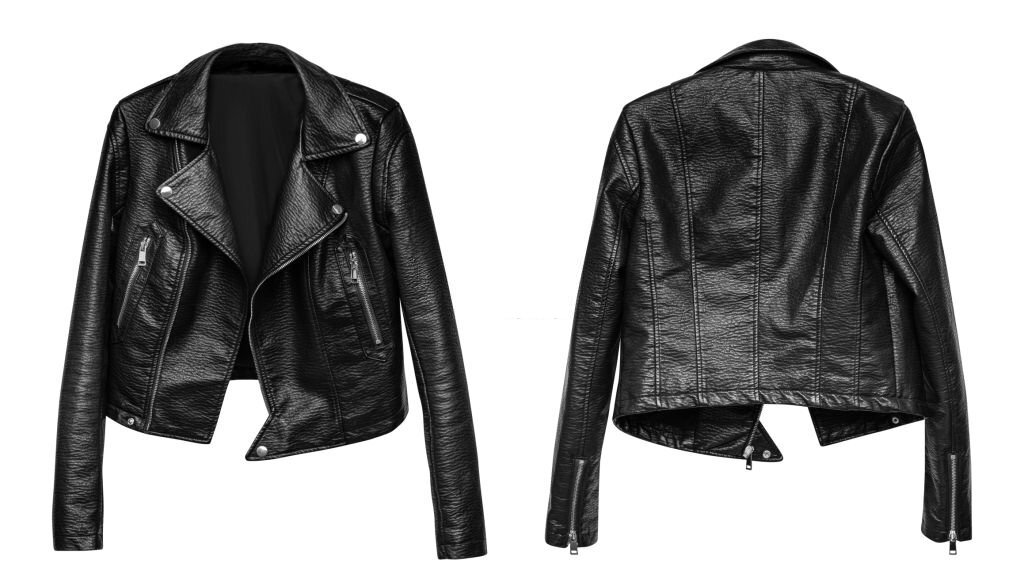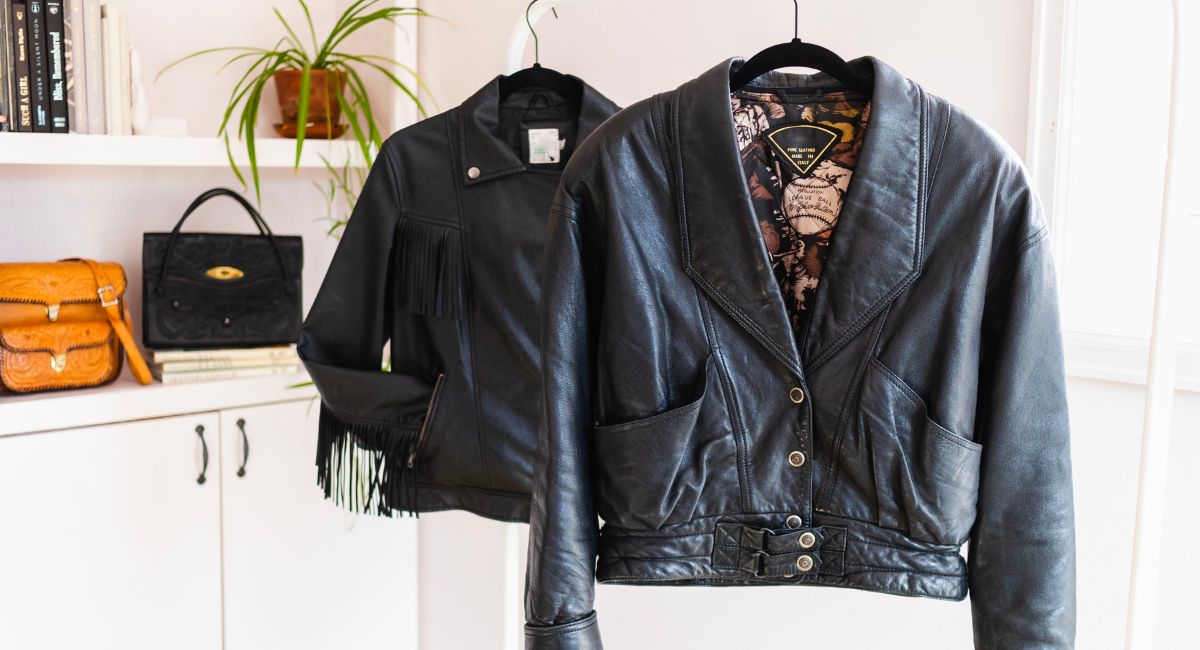For any clothing enthusiast, the leather jacket is a must-have in their closet. But considering how prone leather jackets are to peeling or flaking, knowing how to fix leather peeling is an essential life skill. However, the information on the same is not as widespread as it should be. This is where we step in!

In this blog, we discuss on fixing a peeling leather jacket using different readily available materials. We also dive into how you can prevent your leather jacket from peeling in the first place. So, what are you waiting for? Dive right in!
How to Fix Faux Leather Jacket Peeling
Fashion enthusiasts can vouch for the fact that leather jackets are versatile garments. You can wear your leather jacket with shirts, dresses, skirts, jeans, t-shirts, and so many other clothing types. This makes it an indisposable garment in your closet and therefore makes it necessary to take care of them. In this section, we tackle how to repair a peeling faux leather jacket. Continue reading to find out how to save your jacket from the menace of peeling!

1. Fix Leather Jacket With Liquid Leather
Faux leather jackets are a wardrobe staple for many people, but they can be tricky to care for. Liquid leather is one product that can be used to repair tears or rips in the fabric. However, it is important to read the usage directions carefully before using it on any clothing.
Generally, you will need to apply the liquid leather to both the inside and outside of the tear. Once it is dry, you can trim any excess material away. Finally, you will need to apply a sealant to protect the repair. With a little effort, you can keep your favourite jacket looking like new for years to come.
2. Fix Faux Leather Jacket With Repair Dye
Peeling leather is unsightly, and often leads to complete degradation of the garment. Don’t loose hope though. If the first tip on how to fix leather jacket peeling didn’t help, this one might. Repair dye can be used to conceal tears and peels, and restore your jacket to its former glory.
Simply choose a dye that closely matches the color of your jacket, and apply it to the affected areas. With a little bit of time and effort, you’ll have a repaired jacket that looks good as new.
3. Fix Leather Jacket With Patches
Patches come in a variety of colors, shapes, and sizes, so it’s important to choose ones that complement your leather jacket. For example, if you have a brown leather jacket, you might want to choose patches that are also brown. If you want your patches to stand out, you can choose patches in a contrasting color, such as black or white.
Once you’ve selected your patches, it’s time to glue them down. Be sure to use a strong glue that will hold thepatch in place. You may need to apply several coats of glue to ensure a secure bond. Once the patches are dry, you’ll have a jacket that looks good as new!
4. Fix Leather Jacket With Olive Oil
While it’s not the most common use for olive oil, it can actually be quite helpful in restoring leather materials. The oil has regenerative qualities that help to slow down the degeneration of the leather, as well as restore its colour and gloss.
Simply apply a small amount of the oil to a clean cloth and rub it into the leather in a circular motion. Allow it to sit for a few hours before wiping away any excess oil. With regular treatment, you can keep your leather jacket looking like new for years to come.
5. Fix Faux Leather Jacket With Nail Paint
If you’re looking for a quick, easy, and affordable way to fix a peeling or flaking leather jacket, nail polish or nail paint may be the solution for you. Simply clean the exposed area of the jacket and carefully apply the nail polish.
This won’t necessarily permanently solve the issue, but it can help to decrease the amount of peeling that occurs.
6. Fix Leather Jacket With Moisturizer
If you’re looking to restore your faux leather jacket to its original condition, you may be surprised to learn that your everyday moisturizer can actually be of assistance. By simply applying the cream to your leatherette jacket, you’ll be amazed at how easy and fast it is to restore both leather and synthetic materials back to their best state. So if you’re in need of a quick fix, reach for the moisturizer and give it a try!
If you have a leather jacket that is starting to show signs of wear, don’t despair. With a little effort, you can restore it to its former glory. The first step is to clean the jacket with a mild soap. Once it is dry, start applying a moisturizer with a fresh, dry towel. Be sure to apply the lotion slowly and evenly, covering all of the cracks and peeled areas. Then, simply let your jacket air dry in a well-ventilated place. With a little care, your leather jacket will look good as new.
7. Fix Faux Leather Jacket With Leather Paint
Another tip on how to fix leather jacket peeling is using widely available leather paint. If you have a leather jacket that is beginning to show signs of wear and tear, you may be wondering how you can repair it. One option is to use leather paint. First, remove any loose flakes of leather from the jacket.
Next, use a gentle brush to apply the paint. Allow the jacket to dry for at least one hour. This technique works best on heavier leather components rather than lighter ones. With this method, you can fix your leather jacket and extend its life.
8. Fix Faux Leather Jacket With Permanent Marker/Shoe Polish
Permanent marker can actually be a great way to cover up blemishes and give your jacket a new lease on life. Start by sanding down the area that you want to cover with permanent marker. This will help to remove any flaking or peeling skin and create a smooth surface for the marker to adhere to. Next, using a similar-colored permanent marker, fill in the area that you sanded down. You may need to apply several coats of marker to get full coverage.
Once the area is fully covered with marker, take a shoe polish that is close in color to the leather and rub it into the marked area. This will help blend the repair into the rest of the jacket and give it a more polished look. Allow the polish to dry completely before wearing your jacket again.
9. Fix Leather Jacket With Oil Fillers
Oil fillers are another way you can fix your jacket. The surface must be completely clear of any peeling pieces before any filler can be applied, and even then it can be difficult to get the filler to stick. Oil fillers are one of the best peeling leather solutions.
Simply apply the oil filler to the affected area with a knife, smooth out the surface, and wait for it to dry. The oil filler will eventually form a strong bond with the leather, creating a surface that looks and feels like new. So if you’re ever faced with a peeling leather jacket, don’t despair – oil filler is here to save the day.
10. Fix Faux Leather Jacket With Leather Conditioners
Peeling and cracking leather can be easily fixed with a leather conditioner. Leather conditioners help to replenish the natural oils in the leather, which prevents it from drying out and becoming brittle. In addition, conditioners help to protect the leather from UV damage, keeping it looking newer for longer.
When conditioning genuine or real leather, it’s important to do so every six months to prevent further damage. With a little bit of care, your leather jacket will last for years to come.
How to Prevent Peeling of Faux Leather Jacket?

As the weather gets chilly, people are slowly beginning to bring out their winter clothing. Leather jackets are great for wintertime! But how to look after them and prevent wear and tear over time?
A leather jacket is a timeless piece that can last you a lifetime – but only if you take care of it. Now that you learned how to fix leather jacket peeling, it is also necessary that you know how to prevent it in the first place. Keep the following in mind:
Purchase Durable Leather
Make sure you purchase a durable leather jacket. Synthetic materials are often used to make fake jackets and imitations of leather. These fake jackets are often made with a polyurethane coating and cloth, which makes them less durable. As a result, they are more likely to peel.
Genuine leather jackets, on the other hand, are made from animal hide and will last much longer. Unless you find yourself in an extreme situation, your genuine leather jacket should not tear. Second, avoid exposing your leather jacket to direct sunlight or excessive heat.
The heat can cause the oils in the leather to evaporate, making the jacket more susceptible to drying out and cracking. If you must expose your jacket to sunlight or heat, make sure you keep it conditioned with a quality leather conditioner.
Heat Exposure
There are several things you can do to help prevent your leather jacket from peeling, including keeping it away from heat sources and investing in a high-quality jacket.
If you wear a faux leather jacket, be aware that it is more susceptible to peeling than genuine leather. This is because synthetic materials are used in the construction of faux leather, making it less durable than genuine leather. When exposed to heat, faux leather is especially prone to peeling.
Therefore, if you live in a warm climate or plan on wearing your jacket in a hot environment, opt for a genuine leather jacket instead. Genuine leather can withstand temperatures up to 305°F without peeling, making it a more ideal choice for those who want their jacket to last.
Beware of Water Exposure
Over time, leather can start to peel and crack, losing its natural oils and becoming less flexible. This is especially true if the leather is exposed to water frequently. To help prevent your leather jacket from peeling, it’s important to pay attention to how often you expose it to water.
Genuine leather is more susceptible to damage from water than faux leather, so if you have a genuine leather jacket it’s best to avoid getting it wet. However, even faux leather can be damaged by water over time, so it’s important to be mindful of how often you expose your jacket to moisture.
By taking care of your leather jacket and keeping it away from water as much as possible, you can help prevent peeling and cracking and extend its lifespan.
Look Out for Aging Issues
No matter how often you wear it or how well you take care of it, your leather jacket will eventually show signs of aging. The first sign is usually a change in color, as the leather begins to dry out and lose its natural oils.
This can be followed by a loss of flexibility, as the leather becomes stiff and brittle. eventually, the leather will develop cracks and begin to peel away from the backing material. If you want to extend the life of your jacket, it’s important to regularly condition the leather to keep it supple and hydrated.
Improper Care
Never assume that a leather jacket can last a long time on its own. Instead, you will need to keep it up. You can only assist it in long-term self-sufficiency in this manner. Fear not—a leather jacket just needs a little upkeep. Particularly, imitation leather will require less upkeep than real leather.
The main difference in care for the two types of materials is that real leather needs to be oiled every once in a while to stay supple, whereas fake leather has a plastic coating that does not need any assistance in staying smooth.
Aside from that, both kinds need to be kept clean and free of dust or any other particles that might help speed up the process of wear and tear. If you take good care of your jacket, it should serve you well for many years to come.

FAQs on Leather Jacket Peeling:
Can a peeling leather jacket be repaired?
Absolutely! Depending on the level of wear, you can choose from a variety of methods to deal with your leather jacket peeling. If you want to know how to fix leather jacket peeling, make sure to read the blog above.
Why does a faux leather jacket starts peeling?
There are several reasons behind the peeling phenomenon. However, the one that clearly covers it all is improper care. Using incorrect cleansers, and extended exposure to water/sun are some of the reasons why your jacket may be peeling.
Does Real Leather Peel?
Yes, it peels too. Real leather only has two components – hide and hair. Faux leather has a completely different composition – it’s made from synthetic materials (polyester or nylon)
What Causes Faux Leather To Peel?
Faux leather is highly durable but can develop cracks and peeling if not cared for properly. If you scratch it, expose it to UV rays, heat up too much, or rub it against something sharp, it will quickly peel off.
What is Faux leather?
Faux leather, also known as synthetic leather, is a material that mimics the appearance and feel of real leather. It’s made from polyurethane, which is basically just plastic infused with natural fibers like cotton or wool, and usually has a sheen to it.
Conclusion
Now that you know how to fix leather jacket peeling, you can go ahead and look after your jacket. Make sure to also keep in mind our tips on how to keep the peeling at bay so your jacket remains in great condition for a long time. Let your investment in this fashionable style of jacket be everything you ever dreamed of. Let us know what if the tips worked in the comments below. Keep your jacket safe!





